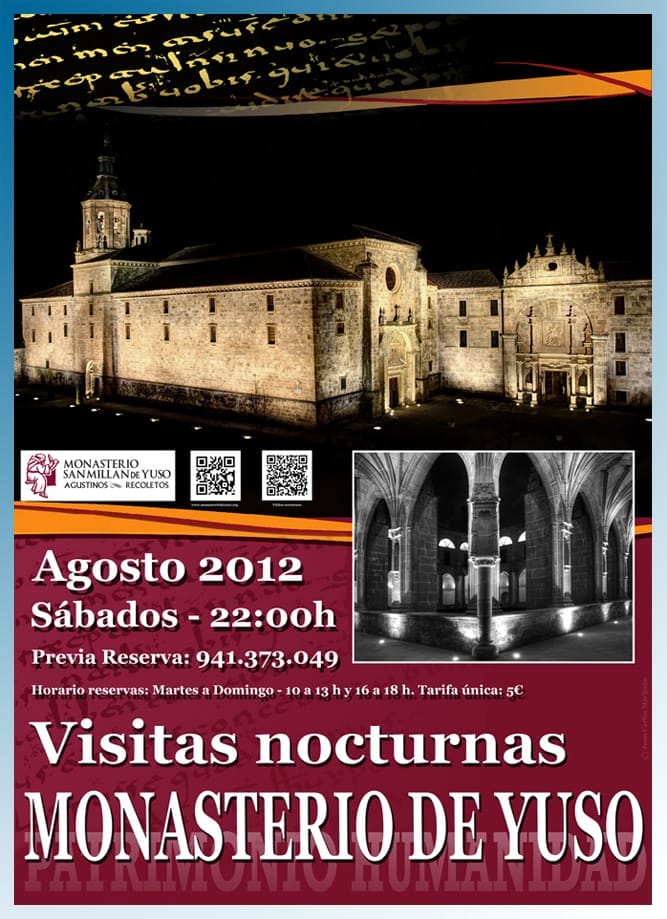The Augustinian Recollect José Luis Untoria, responsible for the visits to the monastery, has explained to the EFE news agency that the visits will be held on four Saturdays in August at ten o’clock in the evening with the same price as the daytime ticket of five euros. Since they have not opened the monastery in the evenings before, they have no actual idea of the demands of the said evening visits, even though they hope to have a group of fifty persons, according to Untoria, who said that the minimum number of participants has not been set.
In any case, he explained that it would be necessary to make a telephone reservation beforehand, so that the monastery may be able to arrange enough guides for them in advance.
Unlike the daytime visit, the evening tour will only cover the ground floor of the convent: the cloister, the Church, the sacristy and the refectory.
In addition to it, there will be a brief tour on the outside, where there are 160 light cannons installed by the Iberdrola Foundation last year. It is indeed an impressive facility which, according to Untoria himself, “we have not been able to use too much.”
Patrimony
The aim of these visits is “to show a different Yuso,” in which “the edifice in itself and silence may have more prominence,” instead of “the choir books or the relics” exhibited during the regular daily visit.
The in-charge of the monastery said: “We have intended to give this visit another perspective and we hope that it may have a positive reception.” He further said that, depending on the response that they may get, these visits could continue until the first weeks of September.
The night visitors will tour various areas of the Monastery of Yuso, which was declared Patrimony of Humanity in 1997, and of the Monastery of Suso. These two monasteries are also known as “de Abajo” and “de Arriba” respectively and are to be found in the same locality. It deals with a complex of exceptional importance for the Spanish language, since in San Millán de la Cogolla were written the first phrases known in Spanish.
These actual areas have their origin mainly in the XVI century, when the processional cloister, the refectory, the sacristy and greater part of the Church were built. While other elements like the choir stalls and retable go back to the XVII century, the retrochoir and the decoration of the sacristy date back to the XVIII century.
Most of these sections had undergone restoration which incurred an investment of 16 million euros.


